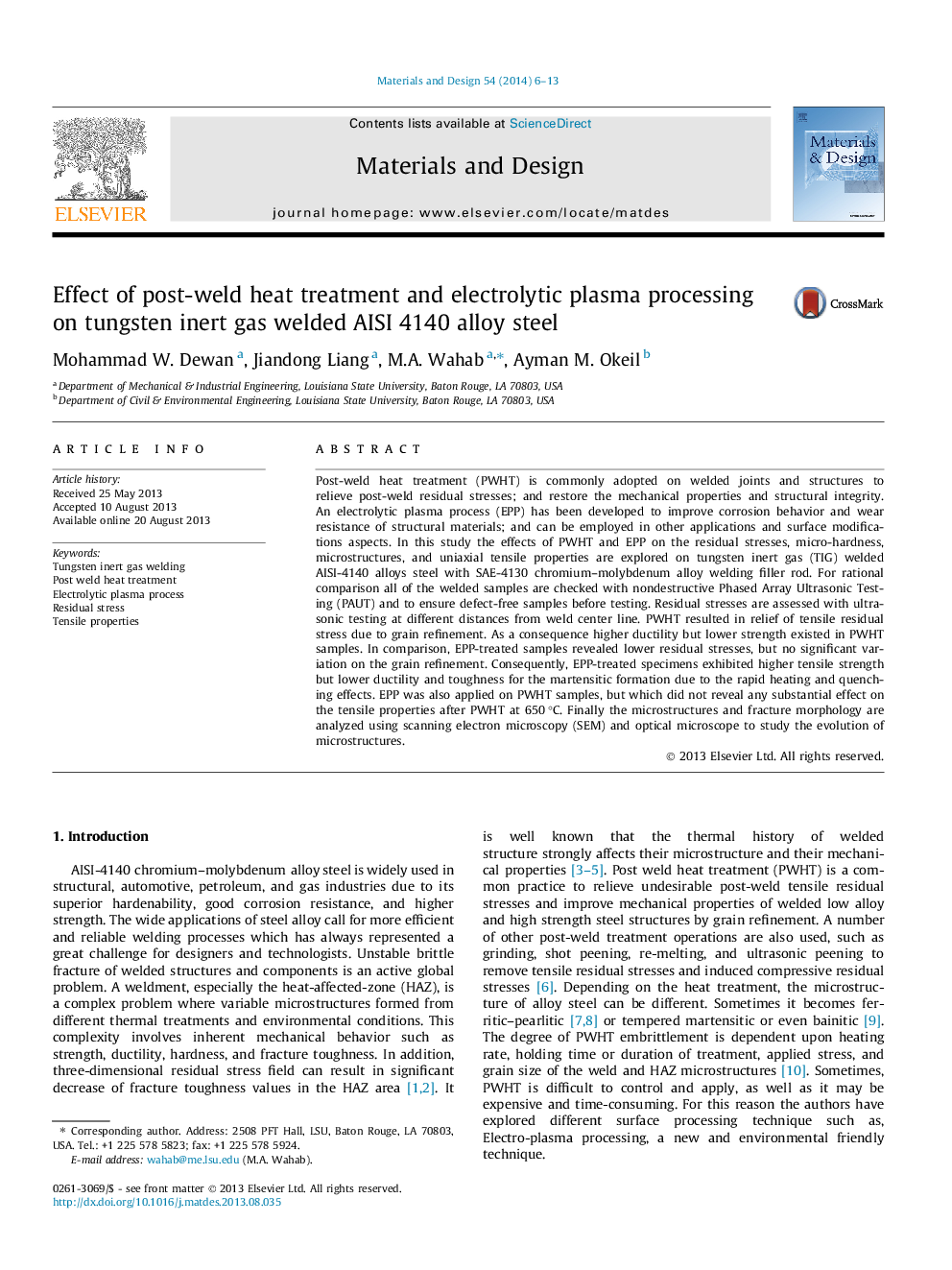| Article ID | Journal | Published Year | Pages | File Type |
|---|---|---|---|---|
| 829605 | Materials & Design (1980-2015) | 2014 | 8 Pages |
•The effects of PWHT and EPP were explored on TIG welded AISI4140 alloy steel.•All welded samples were checked with PAUT and ensured defect-free before testing.•Residual stresses, hardness, and tensile properties were measured experimentally.•PWHT resulted higher ductility but lower tensile strength for grain refinement.•EPP-treated samples showed higher tensile strength but lower ductility.
Post-weld heat treatment (PWHT) is commonly adopted on welded joints and structures to relieve post-weld residual stresses; and restore the mechanical properties and structural integrity. An electrolytic plasma process (EPP) has been developed to improve corrosion behavior and wear resistance of structural materials; and can be employed in other applications and surface modifications aspects. In this study the effects of PWHT and EPP on the residual stresses, micro-hardness, microstructures, and uniaxial tensile properties are explored on tungsten inert gas (TIG) welded AISI-4140 alloys steel with SAE-4130 chromium–molybdenum alloy welding filler rod. For rational comparison all of the welded samples are checked with nondestructive Phased Array Ultrasonic Testing (PAUT) and to ensure defect-free samples before testing. Residual stresses are assessed with ultrasonic testing at different distances from weld center line. PWHT resulted in relief of tensile residual stress due to grain refinement. As a consequence higher ductility but lower strength existed in PWHT samples. In comparison, EPP-treated samples revealed lower residual stresses, but no significant variation on the grain refinement. Consequently, EPP-treated specimens exhibited higher tensile strength but lower ductility and toughness for the martensitic formation due to the rapid heating and quenching effects. EPP was also applied on PWHT samples, but which did not reveal any substantial effect on the tensile properties after PWHT at 650 °C. Finally the microstructures and fracture morphology are analyzed using scanning electron microscopy (SEM) and optical microscope to study the evolution of microstructures.
